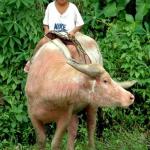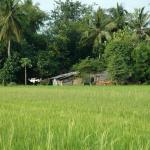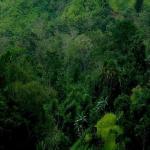The Last Tribes of Mindanao, the Higaonon, people of the living mountains
The indigenous tribes of the Higaonon share a common root language, history and culture, they can be found in the northern and central regions of the island of Mindanao in the Philippines.
They are a nomadic tribe, traveling from one mountain to another, looking for fertile soil for a fruitful harvest. The name Higaonon is derived from the words higa meaning living, the word goan, which means mountains and the word onon meaning people. All togethe these words form the description of the tribe as "people of the living mountains." This tribe, also named "people of the wilderness", is one of the least known ethnic groups that inhabit the hinterlands of North-Central Mindanao. They are scattered over five provinces, Bukidnon. Agusan del Sur, Agusan del Norte, Lanao del Norte and Misamis Oriental. Ever since "the Times of Creation " the Higaonon have lived and continues to live in their ancesteral forest homes, undisturbed, managing the forest in a natural way.
Their way of life is focused on managing the forests they live in and to create a co-existince with its other inhabitants in a harmonious way. The Higanaon tribe consists of eight clans that are centered around the eight main rivers of their "Ancestral Domain". The tribe is divided into peaceful and warrior clans, nowadays all groups exist in peace with eachother. They are true peace loving people and also known as weavers of peace. The strive for peace is expressed in their traditional fabric, the Hinabol. The term Hinabol is a Binukid term for handwoven textile from the south of the Philippines and comes from the verb habol, which means to weave. This kind of fabric is used to refer to the woven hemp that is made by the women of the Higaonon and characterized by the typical colorful stripes in varying thickness, unique patterns and many creative colors. The weavers will choose the traditional colors according to how and what they are feeling that particular day. The Kinatup and the Ginuntiyan are uncommon patterns as they are only woven by the wives of the Datu, generally an elder of the community which is trained in spirituality and education. These patterns are considered sacred and the ones that are used for offerings. The best hinabol fabrics are woven into kamuyot, some sort of backpack or slingbag that is used to carry their bolos and practized as offering to their God or as a peace offering during conflicts with other local tribes.
The culture of Higanaon tribe can best be described as a culture of Peace, for solving their internal conflicts or settle feuds among other ethnic groups, the tribes practises an ancient ritual: the tampudas hu Balagun, or the treaty of the green vine branch, a symbolic ans traditonal cutting of the vine. Most of the members of this tribal group are Christianized, but the recounting by the older generation of stories concerning their traditional and indigenous religion is common practise. When they are baptized the Higaonon are allowed to keep two names, a Christian and an Higaonon name.
The Higaonon tribal people follow the habitual laws of Bunkatol Ha Bulawan Daw Nang Ka Tasa ha Lana, which means treasured unity of Love and Peace. In fact it is a code of conduct that is the sacred bond that unites the entire Higaonon community. For decades the Higaonon people have struggled tirelessly for their independence as a tribe, their rights to cultural integrity and the right to self-determination. the Higaonon, have managed to maintain the skills and knowledge that will protect its forested mountains. They need to secure their Ancestral Domain and forest home against destruction by loggers who started cutting their way into the forested homeland more than sixty years ago.
 ThingsAsian
ThingsAsian




















